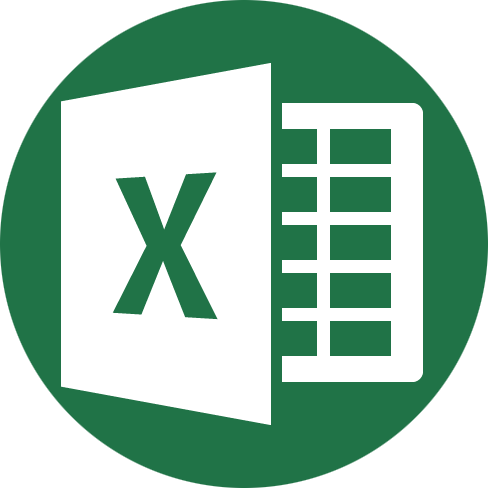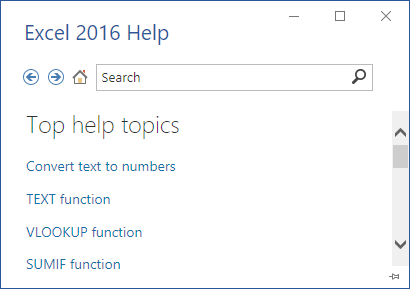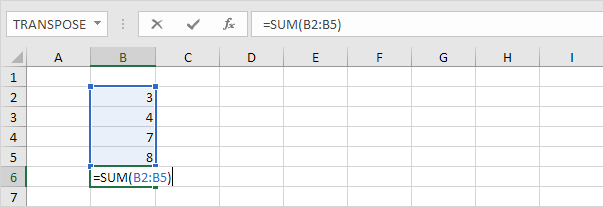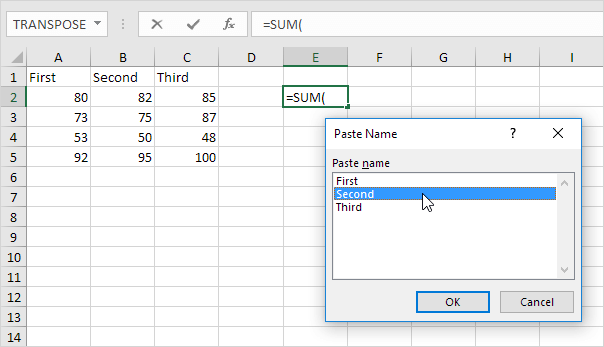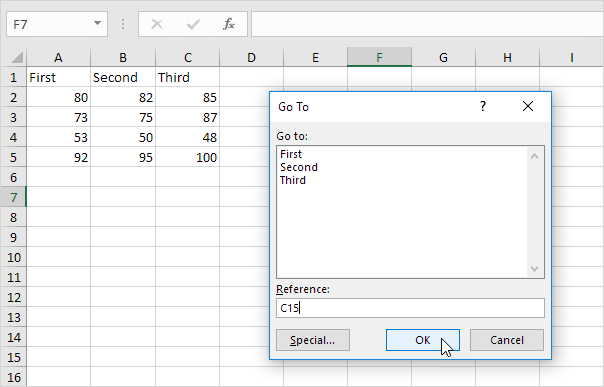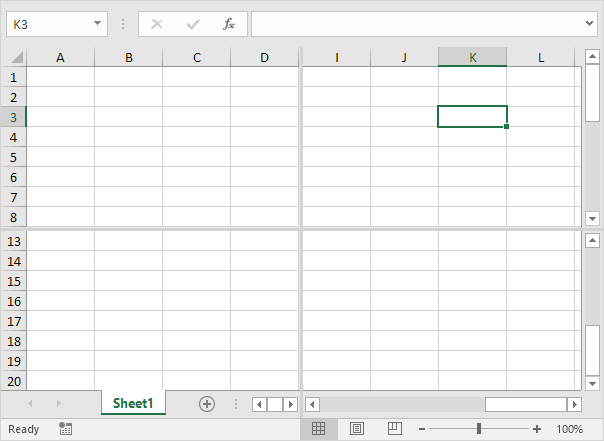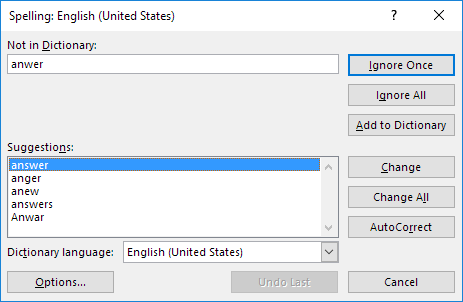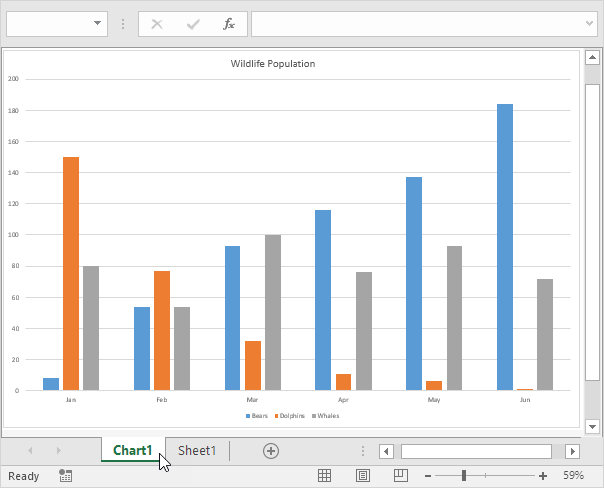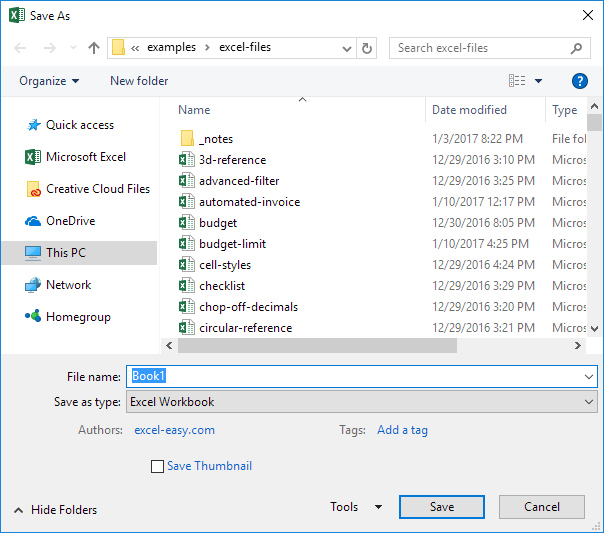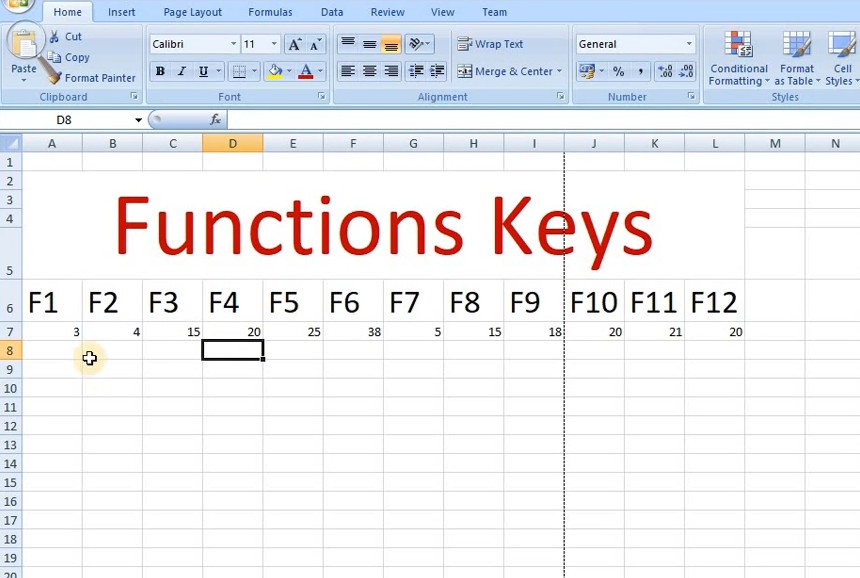
Function Keys
Function Keys in Excel are a handy and faster way of doing certain tasks by using keyboard instead of mouse. In this article we are going to discuss about the use of excel function keys (F1 to F12). Function keys provide same output in all versions of Excel making it easier to recall.
This is a long post of around 3000 + words. So, below is a tabular format for you to know about the F1 to F12 function keys in excel in an easy to digest manner.
| Function Keys | Alt | Ctrl | Shift | Alt + Shift | Ctrl + Shift | Alt + Ctrl | Alt + Ctrl + Shift | |
|---|---|---|---|---|---|---|---|---|
| F1 | Opens Excel Help | Insert a New Chart | Minimize or Maximize the ribbon | No Output | Add new worksheet | No Output | No Output | No Output |
| F2 | Edit contents of an excel | Opens Save As dialog box | Opens Print options | Insert or Edit a comment in selected cell | Saves the workbook | No Output | Opens the “File Open Dialog Box”. | Opens Print options |
| F3 | Paste Named Range or Named List | No Output | Opens Name Manager | Opens dialog box to select functions to insert in the selected cell | No Output | Create names from the row or column labels for the selected cell(s) | Provide name the selected range or cell. | No Output |
| F4 | Toggles between cell references – Absolute, Relative and Mixed Reference. Also repeats last action performed in workbook. | Closes all the open excel workbooks. | Closes all the open excel workbooks. | Select the empty cell available next in the right direction to the current selection. | Quits Excel. Closes all the open excel workbooks. Same as Alt + F4 Function. | Select the empty cell available next in the left direction to the current selection. | Quits Excel. Closes all the open excel workbooks. Same as Alt + F4 Function. | Closes the current open excel workbook window. |
| F5 | Displays the “Go To” dialog box. | No Output | Restores the window size from maximum of the current open excel workbook. | Opens the “Find and Replace” Window. | No Output | No Output | No Output | No Output |
| F6 | Switch between the panes of an excel workbook if you have a split window. If not switches between help task pane and application window. | No Output | Switch to the previous excel workbook if you have multiple workbooks open. | Switch between the panes of an excel workbook if you have a split window. If not switches between help task pane and application window. | No Output | Switch to the previous excel workbook if you have multiple workbooks open. | No Output | No Output |
| F7 | Opens the “Spelling” option in excel using which you can check the spellings in your workbook | No Output | Moves the excel window. Works only if your workbook is in a restored window. | Opens the “Research” task pane in your excel workbook. | No Output | No Output | No Output | No Output |
| F8 | Enables and disables “Extend Mode” selection in excel. | Open the “Macros” dialog box. | Moves the excel window. Works only if your workbook is in a restored window. | Select cell or multiple cells or a range of cells using arrow keys. | No Output | No Output | No Output | No Output |
| F9 | Recalculates the output of all formulas in your excel workbook. If editing a cell having formula then replaces the value of the formula in cell. | No Output | Minimizes the Excel window. | Recalculates the output of all formulas in your excel workbook. | No Output | No Output | Recalculates the output of all formulas in your excel workbook. | All the dependent formulas are rechecked and recalculated in all the open workbooks. It also works for the cell which are not marked for recalculation. |
| F10 | Displays the keyboard shortcut for the excel ribbon also known as excel tips. | Display the selection window in excel. | Resizes or restores the excel window if its open in maximum window first. Similarly it maximizes the excel window if its open in restored window initially. | Displays the shortcut window for the selected cell, same as right clicking the mouse on the selected cell. If “Help Window” of Excel is opened then it displays the set of commands for Help Window. | Displays the menu for the “Smart Tag” if only a single “Smart Tag” is present in your workbook. In case of multiple “Smart Tags” it simply toggles to next smart tag and displays its menu. | Displays the shortcut window for the selected cell, same as right clicking the mouse on the selected cell. If “Help Window” of Excel is opened then it displays the set of commands for Help Window. | No Output | No Output |
| F11 | Adds a chart to your excel. If you hit F11 after selecting a specific data range then it uses the same range in chart. | Opens Microsoft Visual Basic Editor. If VB Editor is already open then by pressing this key you can toggle between the Excel workbook and editor. | Adds a macro sheet in your currently open excel workbook with a default name like “Macro1, Macro2, etc” | Inserts a “New Sheet” in your currently open excel workbook. | Displays the Microsoft Script editor for your current open excel workbook | No Output | No Output | No Output |
| F12 | Opens “Save As” dialog box like “Alt + F2” keys. | No Output | Opens the “File Open Dialog Box”. | Saves the workbook like “Alt + Shift + F2” keys. | No Output | Opens Print options. | No Output | No Output |
Function keys allow you to do things with your keyboard instead of your mouse to increase your speed.
F1
Opens Excel Help.
F2
Moves the insertion point to the end of the contents of the active cell. For example, select cell B6 below and press F2.
Note: turn off Allow editing directly in cells (File, Options, Advanced, Editing Options) and pressing F2 will move the insertion point to the formula bar.
F3
Displays the Paste Name dialog box. For example, select cell E2 below, type =SUM(, press F3 and select a name.
Note: of course, first create at least one named range.
F4
Cycles through all 4 types of cell references (absolute, mixed reference (2x) and relative). For example, select cell B5 below, click in the formula bar, move the insertion point in or to the right of G2, and press F4.
Note: if you are not editing a cell, F4 repeats the last action, if possible.
F5
Displays the Go To dialog box. For example, to select cell C15, in the Reference box, type C15, and click OK.
Note: you can also select named ranges, or click Special to quickly select all cells with formulas, comments, conditional formatting, constants, data validation, etc.
F6
Moves to the next pane in a worksheet that has been split.
F7
Displays the Spelling dialog box (the same as clicking Spelling on the Review tab).
F8
Turns on/off Extend mode. If Extend mode is turned on, select cell A1 and press → and ↓ a few times.
Note: if Extend mode is turned off, hold down SHIFT and press → and ↓ a few times.
F9
Calculates the workbook. By default, any time you change a value, Excel automatically calculates the workbook. Turn on Manual calculation (on the Formulas tab, in the Calculation group, click Calculations Options, Manual) and change the value in cell A1 from 5 to 6.
Press F9.
Note: if you are editing a cell, F9 replaces a formula with its own result.
F10
Shows the key tips (the same as pressing ALT). Key Tips allow you to quickly perform any task available on the Ribbon without using the mouse.
F11
Creates a chart sheet of a selected range.
F12
Brings up the Save As dialog box.
Note: to change the default file location, on the File tab, click Options, Save.
